Before we really get started on today's episode, I'd like to share a bunch of really cool pictures created by my friend Kevin Gill. Kevin's a computer programmer, 3-D animator and works on climate science data for NASA.
And in his spare time, he uses his skills to help him imagine what the Universe could look like. For example, he's mapped out what a future terraformed Mars might look like based on elevation maps, or rendered moons disturbing Saturn's rings with their gravity.
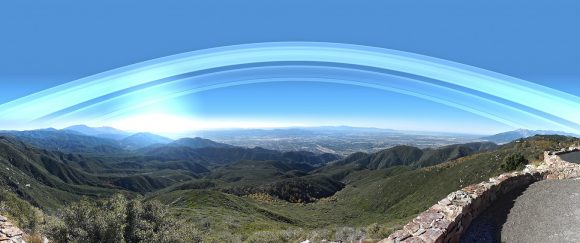
Earth's Rings over San Bernadino. Credit: Kevin Gill (CC BY-SA 2.0)
But one of my favorite sets of images that Kevin did were these. What would it look like if Earth had rings? Kevin and his wife went to a few cool locations, took some landscape pictures, and then Kevin did the calculations for what it would look like if Earth had a set of rings like Saturn.
And let me tell you, Earth would be so much better. At least you'd think so, but actually, it might also suck.
Last time I checked, we don't have rings like this. In fact, we don't have any rings at all.
Why not? Considering the fact that Saturn, Jupiter, Uranus and Neptune all have rings, don't we deserve at least something?
Did we ever have rings in the past, or will we in the future? What's it going to take for us to join the ring club? Short answer, an apocalypse.
Before we get into the inevitable discussion of death and devastation, let's talk a bit about rings.
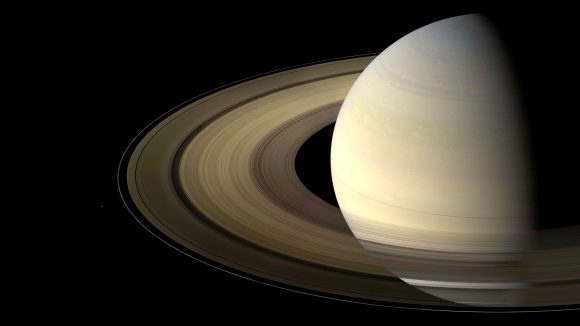
A lovely view of Saturn and its rings as seen by the Cassini spacecraft on Aug. 12, 2009. Credit: NASA/JPL-Caltech/Space Science Institute.
Saturn is the big showboat, with its fancy rings. They're made of water ice, with chunks as big as a mountain, or as small as a piece of sand. Astronomers have been arguing about where they came from and how old they are, but the current consensus - sort of - is that the rings are almost as ancient as Saturn itself: billions of years old. And yet, some process is weathering the rings, grinding the particles so they appear much younger.
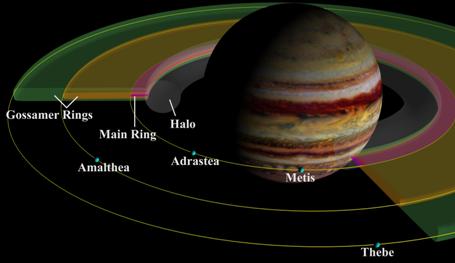
Jupiter's rings. Image Credit: University of Maryland
Jupiter's rings are much fainter, and we didn't even know about them until 1979, when the Voyager spacecraft made their flybys. The rings seem to be created by dust blown off into space by impacts on the planet's moons.
Hey, we've got a moon, that's a sign.

Uranus imaged by Voyager 2 in 1986. Credit: NASA
The rings around Uranus are bigger and more complex than Jupiter's rings, but not as substantial as Saturn's. They're much younger, perhaps only 600 million years old, and appear to have been caused by two moons crashing into each other, long ago.
Again, another sign. We still have the potential for stuff to crash around us.

The labeled ring arcs of Neptune as seen in newly processed data. The image spans 26 exposures combined into a equivalent 95 minute exposure, and the ring trace and an image of the occulted planet Neptune is added for reference. Credit: M. Showalter/SETI Institute
The rings around Neptune are far dustier than any of the other ring systems, and much younger than the Solar System. And like the rings around Uranus, they were probably formed when two or more of its moons collided together.
Now what about our own prospects for rings?
The problem with icy rings is that the Earth orbits too closely to the Sun. There's a specific point in the Solar System known as the "frost line" or "snow line". This is the point in the Solar System where deposits of ice could have survived for long periods of time. Any closer and the radiation from the Sun sublimates the ice away.
This point is actually located about 5 astronomical units away from the Sun, in the asteroid belt. Mars is much closer, so it's very dry, while Jupiter is beyond the frost line, and its moons have plenty of water ice.
The Earth is a mere 1 AU from the Sun. That's the very definition of an astronomical unit, which means it's well within the frost line. The Earth itself can maintain water because the planet's magnetosphere acts like a shield against the solar wind. But the Moon is bone dry (except for the permanently shadowed craters at its poles).
And if there was an icy ring system around the Earth, the solar wind would have blasted it away long ago.
Instead, let's look at another kind of ring we can have. One made of rock and dust, containing death and sorrow, from a pulverized asteroid or moon. In fact, billions of years ago, we definitely had a ring when a Mars-sized planet crashed into the Earth and spewed out a massive ring of debris. This debris collected together into the Moon we know today. That impact turned the Earth's surface inside out. It was all volcanoes, everywhere, all the time.
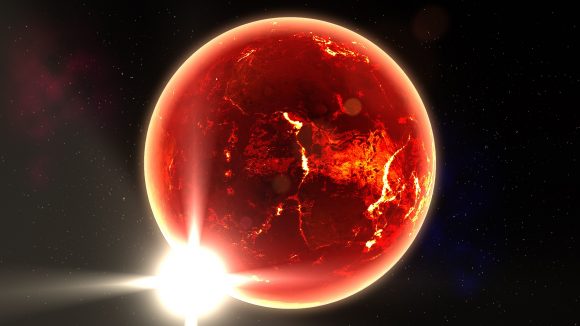
Credit: Kevin Gill (CC BY-SA 2.0)
It's also possible we had a second moon in the ancient past, which collided with our current Moon. That would have generated an all new ring of material for millions of years until it was recaptured by the Moon, kicked out of orbit, or fell down onto the Earth.
It's that "fell down onto Earth" part that's apocalyptic. As mountains of ring material entered the Earth's atmosphere, it would increase the temperature, baking and boiling away any life that couldn't burrow deep underground.
It's kind of like the book Seveneves, which you should totally read if you haven't already. It talks about what we would see if the Moon broke apart into a ring, and the terrible terrible thing that happens next.
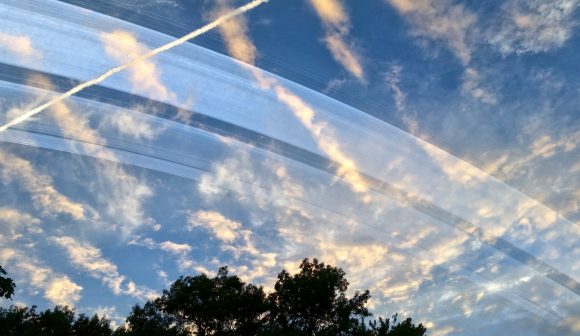
Earth's Rings from New Hampshire. Credit: Kevin Gill (CC BY-SA 2.0)
If Earth did get a set of rings, they'd be pretty, but they'd also be a huge pain for astronomers. As you saw in Kevin's original pictures, the rings take up a huge chunk of the sky for most observers. The farther north or south you go, the more dramatically the rings will ruin your view. Only if you were right at the equator, you'd have a thin line, which would be borderline acceptable.
Furthermore, the rings themselves would be incredibly reflective, and completely ruin the whole concept of dark skies. You know how the Moon sucks for astronomy? Rings would be way way worse.
Finally, rings would interfere with our ability to launch spacecraft and maintain satellites. It depends on how far they extend, but we wouldn't be able to have any satellites in that region or cross the ring plane. Oh, and that fiery death apocalypse I mentioned earlier.
We know that the Moon is drifting away from the Earth right now thanks to the conservation of angular momentum. But in the distant future, billions of years from now, there might be a scenario that turns everything around.
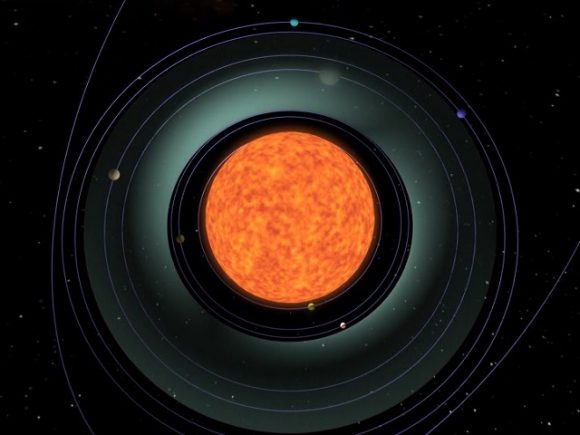
The Sun's habitable zone in its red giant phase. Credit: NASA/Goddard Space Flight Center Conceptual Image Lab
As you know, when it runs out of fuel in its core, the Sun is going to bloat up as a red giant, consuming Mercury and Venus. Scientists are on the fence about Earth. Some think that Earth will be fine. The Sun will blast off its outer layers, but not actually envelop Earth. Others think that at the Sun's largest point, we'll be orbiting within the outer atmosphere of the Sun. Ouch, that's hot.
The orbiting Moon will experience drag as it goes around the Earth, slowing down its orbital velocity, and causing it to spiral inward. Once it reaches the Roche Limit of the Earth, about 9,500 km, our planet's gravity will tear the Moon apart into a ring. The chunks in the ring will also experience drag in the solar atmosphere and continue to spiral inward until they crash into the planet.
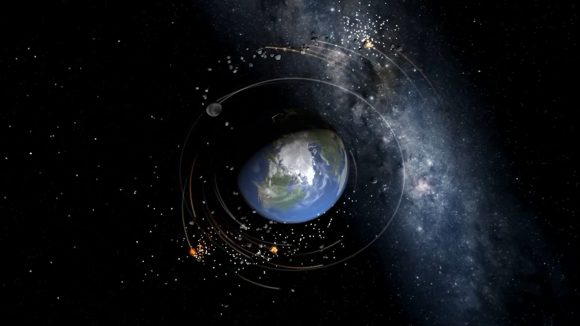
The Moon tearing apart to become a ring around Earth. Credit: Universe Sandbox ²
That would be considered a very bad day, if it wasn't for the fact that we were already living inside the atmosphere of the Sun. No amount of terraforming will fix that.
Sadly, the Earth doesn't have rings like Saturn, and it probably never did. It might have had rings of rock and dust for periods, but they weren't that majestic to look at. In fact, seeing rings around the planet would mean we'd lost a moon, and our planet was about go through a period of bombardment. I'll pass.
No comments:
Post a Comment